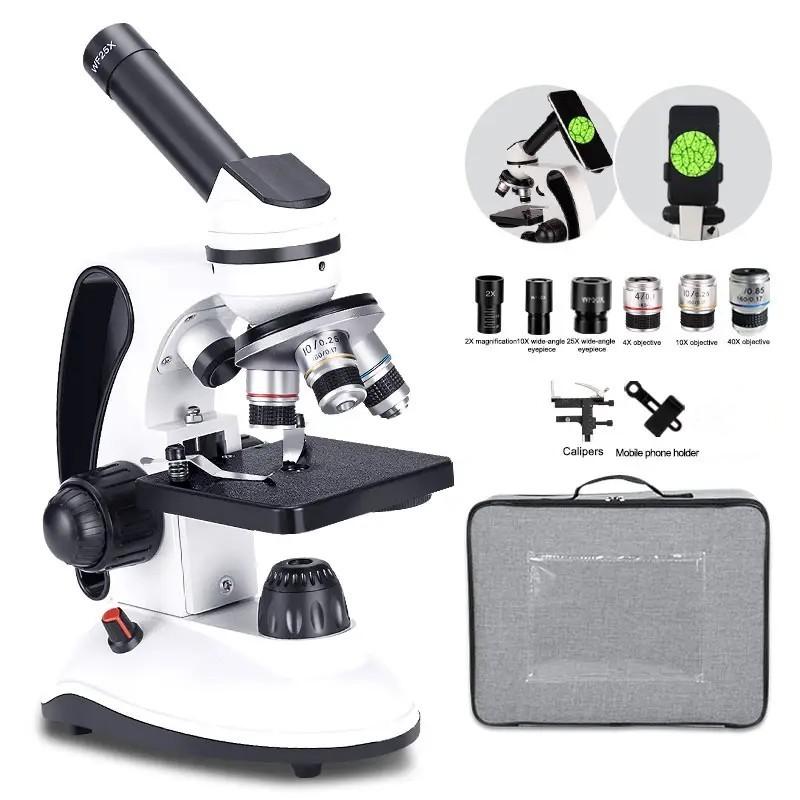Are Bacteria Microscopic Organisms ?
Yes, bacteria are microscopic organisms. They are single-celled prokaryotic organisms that can only be seen under a microscope.
1、 Size and Structure of Bacteria
Yes, bacteria are microscopic organisms. They are single-celled prokaryotic organisms that can only be seen under a microscope. Bacteria are incredibly small, with most species ranging in size from 0.2 to 2 micrometers in diameter. However, there are some exceptions, such as Epulopiscium fishelsoni, which can reach up to 0.5 millimeters in length.
The structure of bacteria is relatively simple compared to eukaryotic cells. They lack a nucleus and other membrane-bound organelles. Instead, their genetic material is contained in a single circular chromosome located in the cytoplasm. Bacteria also have a cell wall made of peptidoglycan, which provides structural support and protection.
In recent years, advancements in microscopy techniques have allowed scientists to gain a deeper understanding of bacterial structure. For example, cryo-electron microscopy has provided high-resolution images of bacterial cells, revealing intricate details of their internal structures. This technique has helped uncover the complex organization of proteins and other molecules within bacterial cells.
Furthermore, the discovery of new bacterial species has expanded our knowledge of bacterial diversity and structure. For instance, some bacteria have unique features, such as magnetosomes, which are membrane-bound structures that allow them to align with Earth's magnetic field. These discoveries highlight the incredible diversity and adaptability of bacteria.
In conclusion, bacteria are indeed microscopic organisms, and their size and structure have been extensively studied. Ongoing research and technological advancements continue to provide new insights into the fascinating world of bacteria.

2、 Classification and Taxonomy of Bacteria
Yes, bacteria are microscopic organisms. They are single-celled prokaryotic organisms that are typically a few micrometers in length. Bacteria are found in various environments, including soil, water, and the human body. They are incredibly diverse and can be classified into different groups based on their characteristics.
In terms of classification and taxonomy, bacteria are classified into different phyla, classes, orders, families, genera, and species. The classification of bacteria has evolved over time as new information and techniques have become available. Traditionally, bacteria were classified based on their shape, staining properties, and metabolic characteristics. However, with the advent of molecular techniques, such as DNA sequencing, the classification of bacteria has become more accurate and precise.
The latest point of view in the classification and taxonomy of bacteria involves the use of genomic information. Genomic studies have revealed the genetic diversity and evolutionary relationships among different bacterial species. This has led to the reclassification and reorganization of many bacterial groups.
Furthermore, the field of metagenomics has allowed scientists to study the collective genomes of entire bacterial communities, providing insights into the diversity and functions of bacteria in various ecosystems. This has expanded our understanding of bacterial taxonomy and the role of bacteria in different environments.
In conclusion, bacteria are indeed microscopic organisms. The classification and taxonomy of bacteria have evolved over time, with the latest point of view incorporating genomic information to better understand the diversity and evolutionary relationships among bacterial species.

3、 Metabolism and Reproduction of Bacteria
Yes, bacteria are microscopic organisms. They are single-celled prokaryotic organisms that can only be seen under a microscope. Bacteria are incredibly diverse and can be found in various environments, including soil, water, and even inside the human body.
Bacteria have a unique metabolism that allows them to obtain energy and nutrients from their surroundings. They can be classified into different groups based on their metabolic processes. For example, some bacteria are autotrophs, meaning they can produce their own food through photosynthesis or chemosynthesis. Others are heterotrophs, relying on organic compounds for their energy needs. Bacteria can also be categorized based on their oxygen requirements, such as aerobic bacteria that require oxygen for their metabolism, and anaerobic bacteria that can survive without oxygen.
Reproduction in bacteria occurs through a process called binary fission. This is a form of asexual reproduction where a single bacterium divides into two identical daughter cells. The speed at which bacteria reproduce is astonishing, with some species being able to double their population in just 20 minutes under ideal conditions.
It is worth mentioning that the field of microbiology is constantly evolving, and new discoveries are being made about bacteria all the time. For example, recent research has shed light on the role of bacteria in various ecosystems, their interactions with other organisms, and their potential applications in biotechnology and medicine. Additionally, advancements in technology have allowed scientists to study bacteria at a molecular level, providing deeper insights into their metabolism and reproduction.
In conclusion, bacteria are indeed microscopic organisms with a diverse range of metabolic processes and reproductive strategies. Ongoing research continues to expand our understanding of these fascinating organisms and their significance in various fields.

4、 Ecological Roles and Interactions of Bacteria
Yes, bacteria are microscopic organisms. They are single-celled prokaryotes that can only be seen under a microscope. Bacteria are incredibly diverse and can be found in almost every environment on Earth, including soil, water, air, and even inside the human body.
Bacteria play crucial ecological roles and have a significant impact on the environment. They are involved in nutrient cycling, decomposition, and the breakdown of organic matter. Bacteria are responsible for the conversion of nitrogen gas into a form that plants can use, a process known as nitrogen fixation. This is essential for the growth and development of plants and is a key component of the nitrogen cycle.
Bacteria also have important interactions with other organisms in their environment. They can form symbiotic relationships with plants, animals, and even other bacteria. For example, some bacteria live in the roots of plants and help them absorb nutrients from the soil. Others live in the intestines of animals and aid in digestion.
Recent research has shed light on the vast diversity of bacteria and their ecological roles. Advances in DNA sequencing technology have allowed scientists to uncover previously unknown bacterial species and understand their functions in ecosystems. For example, studies have revealed the presence of bacteria that can degrade pollutants and toxins, highlighting their potential for bioremediation.
Furthermore, research has shown that bacteria can communicate and coordinate their activities through a process called quorum sensing. This allows them to form complex communities known as biofilms, which can have significant impacts on the environment and human health.
In conclusion, bacteria are indeed microscopic organisms that play crucial ecological roles and have diverse interactions with other organisms. Ongoing research continues to uncover new insights into the importance of bacteria in maintaining the balance and functioning of ecosystems.




































